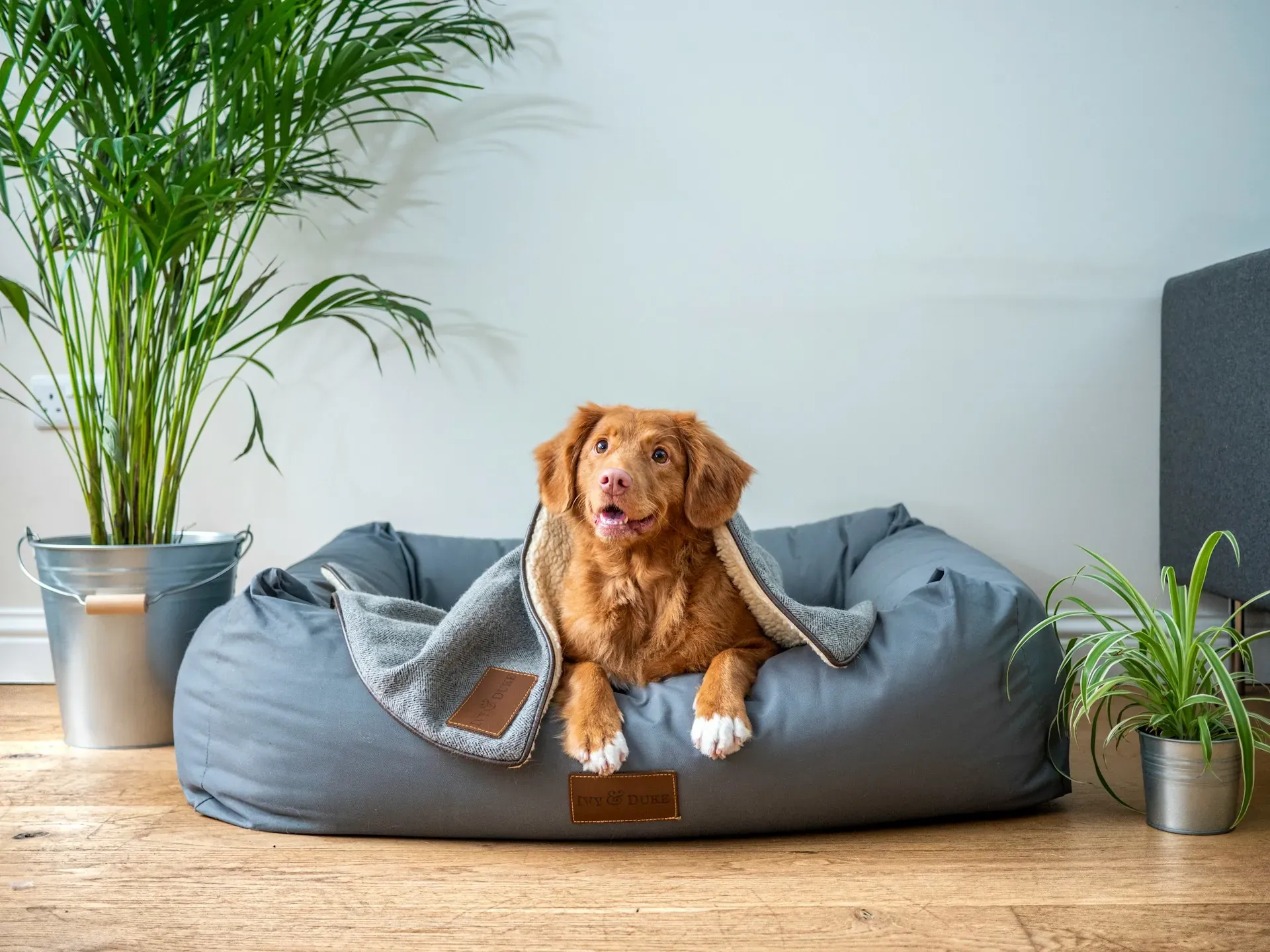Published: October 23, 2023
Last Updated: March 20, 2025
Evaluate your space
Before your dog arrives, take a close look at your living space from a canine perspective. As crazy as it may sound, get down on your hands and knees to see things from their level. Identify potential hazards such as exposed wires, toxic plants, and sharp objects. Consider investing in baby gates to restrict access to certain areas initially.
Secure small, easily swallowed items
Dogs are naturally curious creatures, and they tend to explore the world through their mouths. To prevent accidents, put away small items that could be swallowed or pose a choking hazard. This includes small toys, coins, paperclips, and other small objects that might attract your dog's attention. Additionally, keep chemicals, cleaning supplies, and medications out of reach in high cabinets or locked storage areas.
Protect electrical wires
Chewing on electrical wires can be dangerous for both your dog and your home. To dog-proof your electrical system, use cable protectors to cover exposed wires or tuck them out of reach behind furniture. You can also apply pet-friendly deterrent sprays on wires to discourage chewing.
Lock away household chemicals
Household chemicals like cleaning products and pesticides should always be stored in secure cabinets. Consider fitting childproof locks to ensure your curious pup can't get to any harmful substances, and opt for pet-safe cleaning products when possible to minimise exposure to harmful chemicals.
Choose the right plants
Many common houseplants are toxic to dogs, so it's essential to choose your greenery wisely. Research which plants are safe for dogs and opt for those if you're a plant enthusiast. Keep toxic plants out of reach or consider moving them to a pet-free zone. Some hazardous plants include Bluebells, Daffodils, Foxgloves, Hyacinths and many more.
Use dog-friendly furniture covers
Dogs love to lounge on the sofa or your favourite armchair. To protect your furniture from pet hair, scratches, and accidents, invest in durable, washable furniture covers. These covers are not only practical but also easy to clean and maintain.
Keep rubbish secure
Dogs are notorious for getting into the bin, and this can be messy and potentially dangerous. Invest in a dog-proof rubbish bin with a secure lid or keep your bin can in a cabinet with a childproof lock. This prevents your dog from ingesting harmful substances or making a mess.
Install childproof gates
Childproof gates are a valuable tool for restricting access to certain areas of your home. They can be used to keep your dog out of specific rooms, away from stairs, or from entering areas with potential hazards. Choose gates that are sturdy and easy to install.
Provide safe toys
Dogs need mental and physical stimulation to stay happy and healthy. Ensure they have plenty of safe, durable toys to play with. Avoid toys with small parts that can be easily chewed off and swallowed. Regularly inspect toys for signs of wear and replace them as needed to prevent choking hazards.
Properly store food and treats
If your dog has access to the pantry or kitchen, be sure to store food, treats, and snacks in airtight containers to prevent them from being pilfered. Many dogs have an uncanny ability to find hidden food, so taking extra precautions is essential.
Be cautious with candles and flames
If you enjoy candles, exercise caution when using them in a dog-friendly home. Dogs may be curious about the flames or knock over candles with their tails. Consider using flameless LED candles or placing traditional candles in areas where your dog can't reach them.
Secure windows and balconies
Open windows and balconies can pose risks for dogs, especially if they're inclined to jump or lean out. Install window screens or safety bars to prevent accidents. Always supervise your dog in areas with open windows.
Keep your precious pooch safe
These small steps can go a long way to prevent disease or a costly visit to the vets, so it’s well worth following these tips and even going beyond to make sure your dog is safe from harming itself at home.
If you want to further protect your dog against any injury or illness, take a look at our dog insurance comparison tool to find the right coverage for you.
Was this article helpful?
